Wall Art Tips & Advice
Techniques Used to Create Metal Wall Art: A Comprehensive Guide
Metal wall art has been gaining popularity lately. These eye-catching pieces add depth, texture, and visual interest to any space. But have you ever wondered about the techniques used to create them?
Behind every captivating metal wall art lies a world of craftsmanship and artistic expression. From intricate laser-cut patterns to sculpted forms, the methods employed are as varied as the artworks.
This guide explores the diverse techniques used to create metal wall art. Prepare to appreciate the skill and creativity in transforming bare metal into breathtaking art pieces.
Below is an overview of the different stages of metal art creation and the techniques involved.
| Metal Wall Art Processing Phases | Techniques |
| Metal Shaping and Forming Techniques | – Laser Cutting and Engraving – Plasma Cutting – Water Jet Cutting – Metal Stamping – Metal Bending and Sculpting – Metal Forging – Casting Molten Metal |
| Joining and Assembly Techniques | – Welding (MIG, TIG, Spot Welding) – Riveting and Fastening |
| Surface Finishing and Texturing Techniques | – Patina – Powder Coating – Polishing and Brushing – Etching – Textured Surfaces and Rust Effects |
| Digital and Printing Techniques | – Digital Printing and Sublimation – High-resolution imagery and Graphics – Permanent and Vibrant Prints (Sublimation) – Personalization and Customization |
| Lighting and Multimedia Integration | – LED Lights and Lighting Control – Multimedia Elements |
| Mixed Media and Repurposing Techniques | – Incorporating Other Materials (wood, glass, stones, ceramics) – Repurposing and Upcycling |
| Preservation and Conservation Strategies | – Techniques for Longevity and Maintenance – Proper Care and Handling |
1. Metal Shaping and Forming Techniques
Shaping and forming metal is a fundamental aspect of creating metal wall art. This section explores the diverse array of artists’ techniques to transform flat metal sheets into stunning three-dimensional artworks.
Cutting and Shaping Techniques
Laser Cutting and Engraving
Laser cutting employs high-precision lasers to slice through metal sheets with incredible accuracy. This technique allows artists to create intricate designs and patterns that would be nearly impossible with traditional methods.
On the other hand, laser engraving uses lasers to etch textures and details onto the metal surface, adding depth and visual interest.
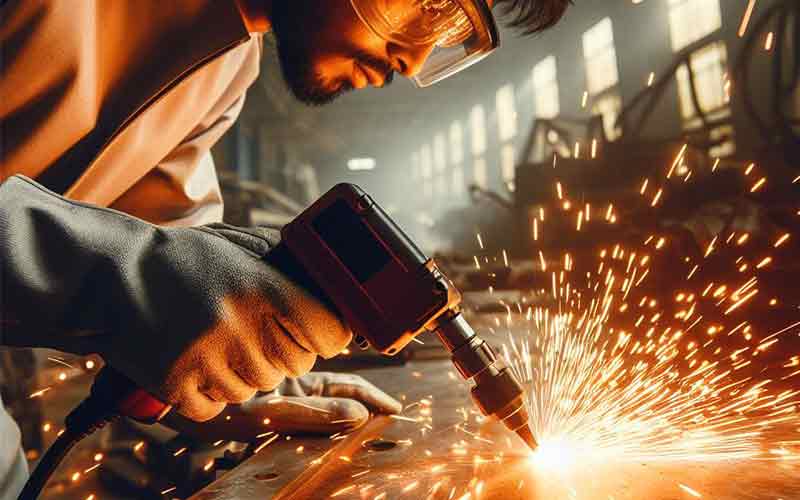
Plasma Cutting
Plasma cutting is the go-to method for larger-scale metal wall art pieces or those requiring thick metal plates.
This thermal cutting process uses an accelerated jet of hot plasma to easily cut through the metal, enabling artists to work with thicker materials and create bold, dramatic shapes.
Water Jet Cutting
Water jet cutting is another precise technique that utilizes a high-pressure stream of water mixed with an abrasive material. This versatile method can cut through various metals with remarkable precision, making it ideal for creating intricate designs and patterns.
Further Reading: How to Choose the Peferct Metal Art for Your Space and Style
Forming and Shaping Techniques
Metal Stamping
Metal stamping involves using a die or a stamp to emboss or indent designs onto a metal surface. This technique can create raised or indented patterns, adding texture and visual interest to metal wall art.
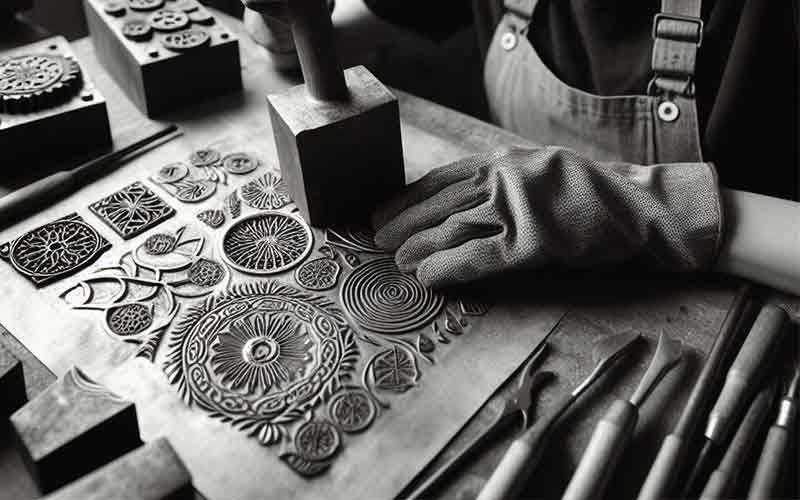
Metal Bending and Sculpting
Skilled artisans use tools and techniques to bend, shape, and sculpt metal sheets or wires into desired forms and shapes. This hands-on approach allows for a high degree of creative expression, resulting in unique and one-of-a-kind metal wall art pieces.
Metal Forging
Forging is an age-old metalworking technique that involves heating and hammering metal to shape it into desired forms. This process can create stunning sculptural metal wall art pieces with unique textures and organic shapes that reflect the artist’s touch.
Casting Molten Metal
In this technique, molten metal is poured into molds to produce specific shapes and forms. Casting allows the creation of intricate and detailed metal wall art pieces, limited only by the artisan’s imagination and the mold designs.
With these cutting, shaping, and forming techniques, artists can bring their visions to life, transforming flat metal sheets into captivating works that add character and depth to any space.
2. Joining and Assembly Techniques
Crafting metal wall art often involves combining multiple components or creating large-scale installations. Joining and assembly techniques help, allowing artists to seamlessly merge separate pieces into cohesive artworks.
Welding
Welding is a crucial technique for joining metal components together. Depending on the project’s requirements, artists may employ various welding methods, such as MIG (Metal Inert Gas), TIG (Tungsten Inert Gas), or spot welding.
MIG welding is a versatile and efficient process well-suited for thicker metals, while TIG welding offers superior precision and control, making it ideal for intricate or decorative welds. Spot welding, on the other hand, involves fusing metals at specific points, creating a clean and minimalist look.
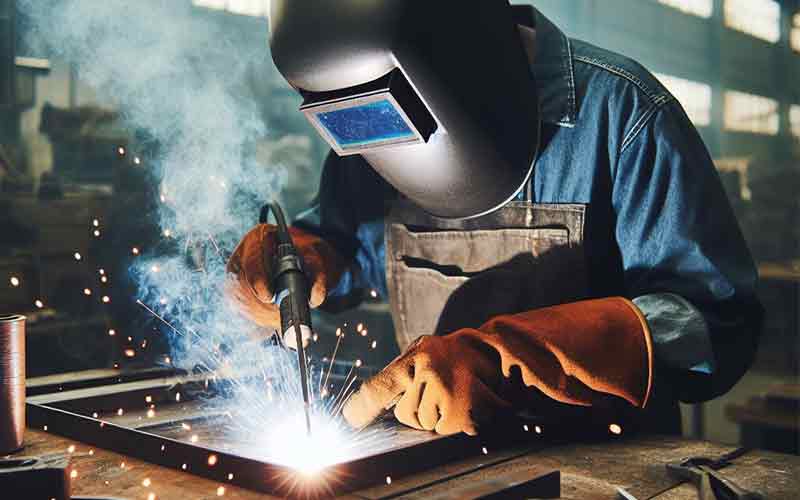
Riveting and Fastening
In addition to welding, artists may use rivets, screws, or other fasteners to assemble metal wall art pieces. This approach allows for a more industrial or rustic aesthetic, showcasing the exposed hardware as part of the design.
Riveting and fastening techniques enable artists to create unique compositions by joining metal components in unconventional ways, pushing the boundaries of traditional metal art.
These joining and assembly methods are frequently combined with other metalworking approaches like cutting, shaping, or texturing to craft remarkable metal wall decor pieces. From monumental sculptures to elaborate wall installations, skillfully uniting individual components is vital for bringing artistic visions to fruition.
3. Surface Finishing and Texturing Techniques
While the shape and form of metal wall art are essential, the surface finishing and texturing techniques candidly elevate their visual appeal. These methods add depth, character, and a unique patina to the metal, transforming it into a captivating work of art.
Patina
Patina is a natural or artificially induced oxidation process that creates a distinctive aged appearance on the metal surface.
Artists may use chemical treatments or allow natural weathering to develop a patina, resulting in various colors, from rich blues and greens to warm browns and reds.
Powder Coating
Powder coating offers a smooth, vibrant finish that enhances the metal’s color and appearance. In this process, a dry powder is electrostatically applied to the metal surface and then cured with heat, creating a durable and long-lasting finish.
Polishing and Brushing
Polishing and brushing techniques can create various effects, from shiny, reflective surfaces to textured, brushed finishes. These methods alter the metal’s appearance, highlighting its ingrained beauty and unique grain patterns.
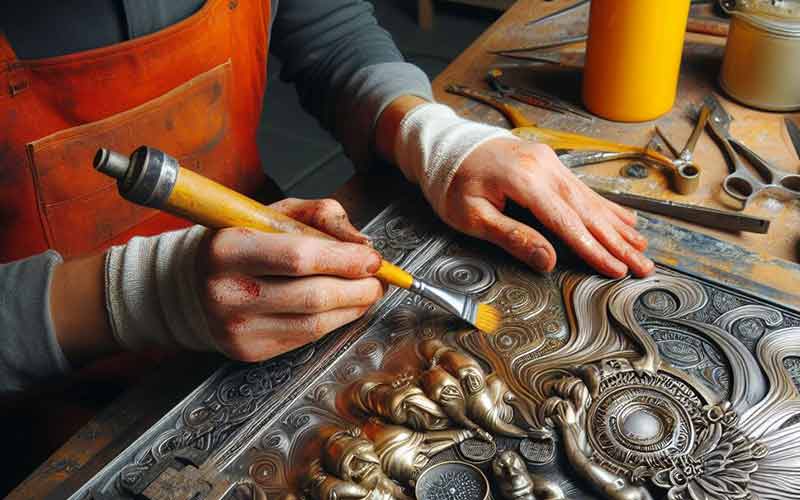
Etching
Etching involves chemical or mechanical processes to selectively remove material from the metal surface, creating intricate designs and patterns.
This technique can add depth and visual interest to metal wall art pieces, transforming a flat surface into a captivating work of art.
Textured Surfaces and Rust Effects
For a more rustic or industrial look, artists may intentionally create textured surfaces or induce controlled rusting on the metal. These techniques can add depth, volume, and a weathered aesthetic to the metal wall art, evoking a sense of history and character.
Artists can unleash metal’s full potential by carefully selecting and combining these surface finishing and texturing techniques. With their unique textures and patinas, they can create pieces that win the eye and engage the senses.
4. Digital and Printing Techniques
In the ever-evolving landscape of metal wall art, artists are embracing the power of digital technologies to push creative boundaries and unlock new possibilities.
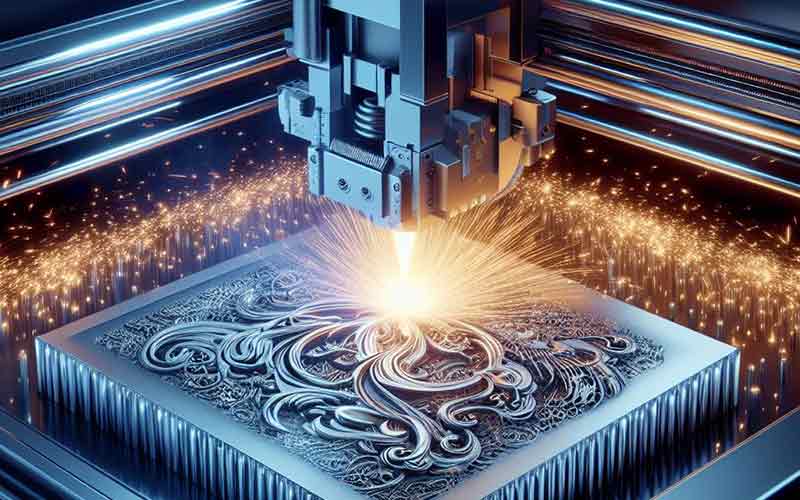
High-Resolution Imagery and Graphics
Digital printing and sublimation techniques have revolutionized artists’ integration of high-resolution images, patterns, and designs onto metal surfaces. With incredible detail and vibrancy, these methods seamlessly integrate custom artwork, photographic prints, or intricate motifs into metal wall art pieces.
Sublimation: Permanent and Vibrant Prints
Sublimation, in particular, is a game-changer in metal wall art printing. In this process, dyes are infused directly into the metal surface using heat and pressure, creating a permanent, fade-resistant print that will not peel or crack over time.
Personalization and Customization
Artists can offer unparalleled customization and personalization by combining digital printing and sublimation with traditional metalworking techniques.
Be it a custom family portrait, an abstract design, or a nature-inspired motif, these digital techniques open up a world of possibilities and ensure that each piece of metal wall art is unique.
Digital and printing techniques have expanded metal wall art’s creative horizons and provided artists with a powerful toolset to cater to individual tastes and preferences, elevating it to new heights of artistic expression.
5. Lighting and Multimedia Integration
In today’s world, metal wall art is not just a static display – it’s an opportunity to create dynamic and interactive experiences. Artists are pushing the boundaries by integrating lighting and multimedia elements into their creations, elevating metal wall art to a new level.

LED Lights and Lighting Control
Incorporating LED lights into metal wall art adds a captivating and ever-changing dimension. Artists can strategically place LED lights behind cutouts, within crevices, or around the edges of their works, creating a stunning interplay of light and shadow.
Advanced lighting control systems allow for programmed lighting sequences, color changes, or interactive lighting that responds to motion or sound.
This technological integration transforms metal wall art into a truly immersive experience that captures viewers and adds dynamism to any space.
Multimedia Elements
Some artists take metal wall art further by integrating multimedia elements such as video projections, sound installations, and interactive displays.
These cutting-edge techniques blur the lines between art, technology, and sensory experiences, creating unique and engaging works.
For example, a piece of metal wall art could feature video projections that bring the artwork to life or incorporate sensors that trigger sound effects or lighting changes as viewers interact.
By embracing lighting and multimedia integration, metal wall art transcends its traditional boundaries, becoming a multisensory experience that captivates the senses and sparks imagination.
6. Mixed Media and Repurposing Techniques
Metal wall art is not limited to using metal alone. Artists are exploring mixed-media approaches, combining metals with other materials to create unique textures and visual interest. Repurposing and upcycling techniques are also gaining popularity, breathing new life into discarded objects and promoting sustainability.
Incorporating Other Materials
Artists can incorporate wood, glass, stones, or ceramics into their metal wall art pieces to create striking contrasts and intriguing combinations. The juxtaposition of different textures, colors, and materials can add depth and dimension to the artwork, captivating viewers with its multifaceted nature.
Repurposing and Upcycling
Repurposing and upcycling techniques involve giving new life to reclaimed or recycled metal objects, such as old tools, utensils, or machinery parts. Once destined for the scrapyard, these discarded items can be transformed into rare wall art pieces with unique stories and characters.
This approach promotes sustainability and celebrates the history and craftsmanship of these repurposed objects, imbuing them with a renewed purpose and artistic expression.
Mixed media techniques offer endless possibilities for creative exploration, whether incorporating natural elements like driftwood or combining metals with modern materials like acrylic.
Repurposing and upcycling, on the other hand, showcase the artist’s ability to see beauty in the forgotten and discarded, turning what was once ordinary into extraordinary works of art.
These techniques add depth and uniqueness to metal wall art and contribute to a more sustainable and environmentally conscious artistic practice.
7. Preservation and Conservation Strategies
While metal wall art is designed to be durable, proper care and maintenance are crucial to ensuring its longevity.
Artists and collectors must understand the importance of preservation and conservation strategies to protect these artistic treasures for future generations.
Techniques for Longevity and Maintenance
Different preservation methods may be required depending on the materials and techniques employed. For instance, pieces with patinas or intentional rusting may require special coatings or treatments to prevent further oxidation or damage.
Clear sealants or varnishes can protect surfaces from environmental factors like moisture, sunlight, or pollutants.
Regular cleaning and careful handling are also essential to maintaining the integrity of the artwork.
For outdoor installations or pieces exposed to the elements, artists may need to consider weather-resistant coatings, rust-inhibiting treatments, or even protective enclosures to safeguard the metal from the harsh effects of nature.
Further Reading
- An In-depth Guide to Cleaning and Maintaining Metal Wall Art
- How to Hang Your Metal Wall Art Pieces Like a Pro
Importance of Proper Care and Handling
Educating collectors and appreciators about proper care and handling is equally crucial. Despite their seemingly sturdy appearance, metal wall art pieces are often delicate or fragile. Improper handling, exposure to harsh chemicals, or excessive force can easily damage or compromise the artwork’s integrity.
By following the artist’s recommended care instructions and seeking professional guidance when needed, collectors can ensure that their metal wall art pieces remain pristine for years to come, preserving the artist’s vision and creative legacy.
Embracing preservation and conservation strategies safeguards the investment in these unique artworks and demonstrates respect for the artistic process and the skilled craftsmanship that went into their creation.
Conclusion
Our journey through the techniques of metal wall art has revealed a world of artistic brilliance and creative self-expression. From the precision of laser cutting to forging, each method provides artists with a unique canvas to transform humble metal into extraordinary works of art.
However, the true magic unfolds when these techniques intertwine harmoniously. Combining approaches like mixed media, repurposing, and multimedia integration adds layers of depth, uplifting metal wall art into multi-sensory experiences that captivate and inspire.
As you explore this artistic realm, remember that metal wall art reflects human ingenuity, perseverance, and the innate desire to elevate the ordinary into something extraordinary. May this guide inspire you to explore boldly, embrace these techniques, and allow your artistic vision to soar without limits.
Embracing preservation strategies is paramount to safeguarding these artistic treasures, ensuring they endure as testaments to human creativity and metal’s boundless potential as a creative medium for future generations.

